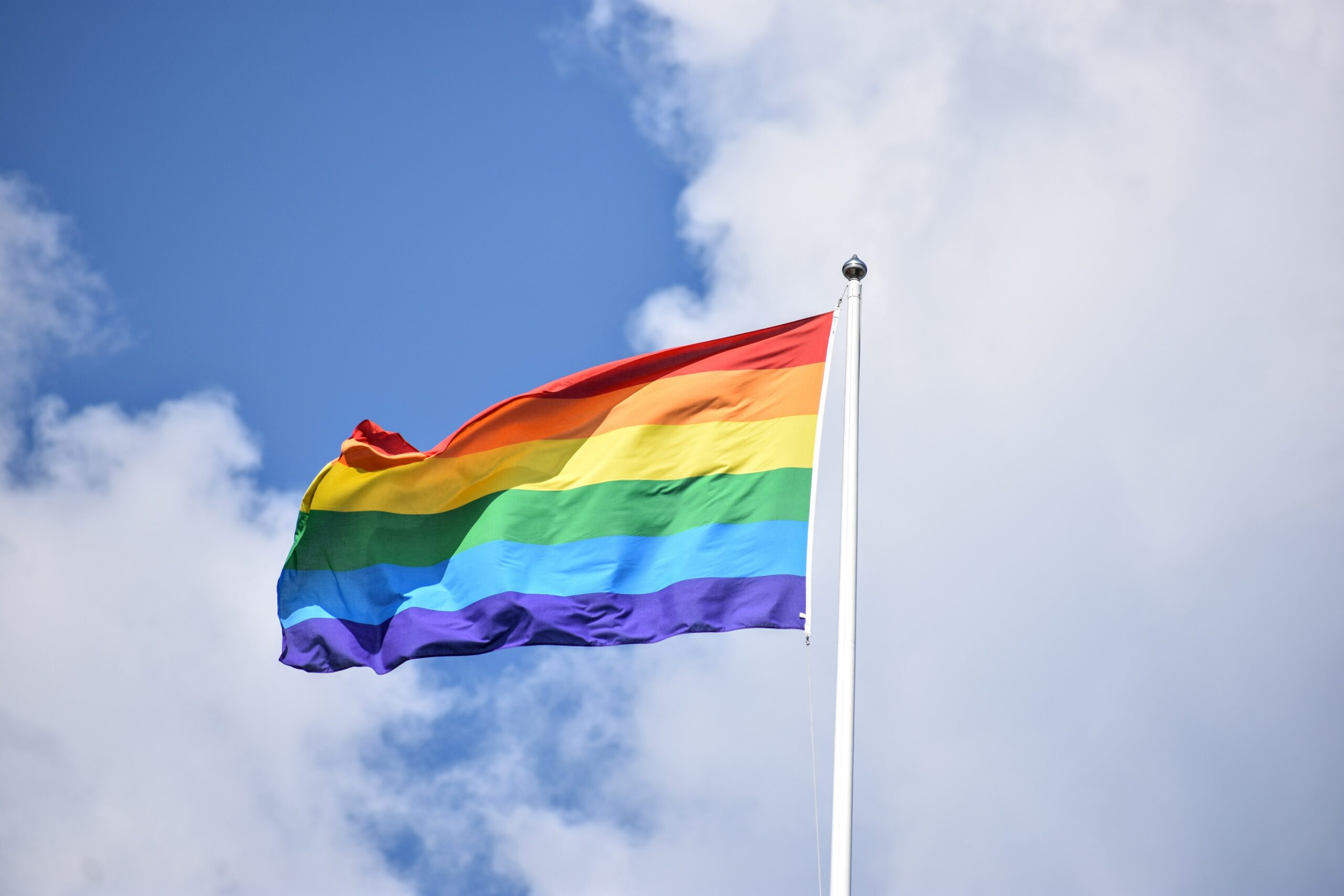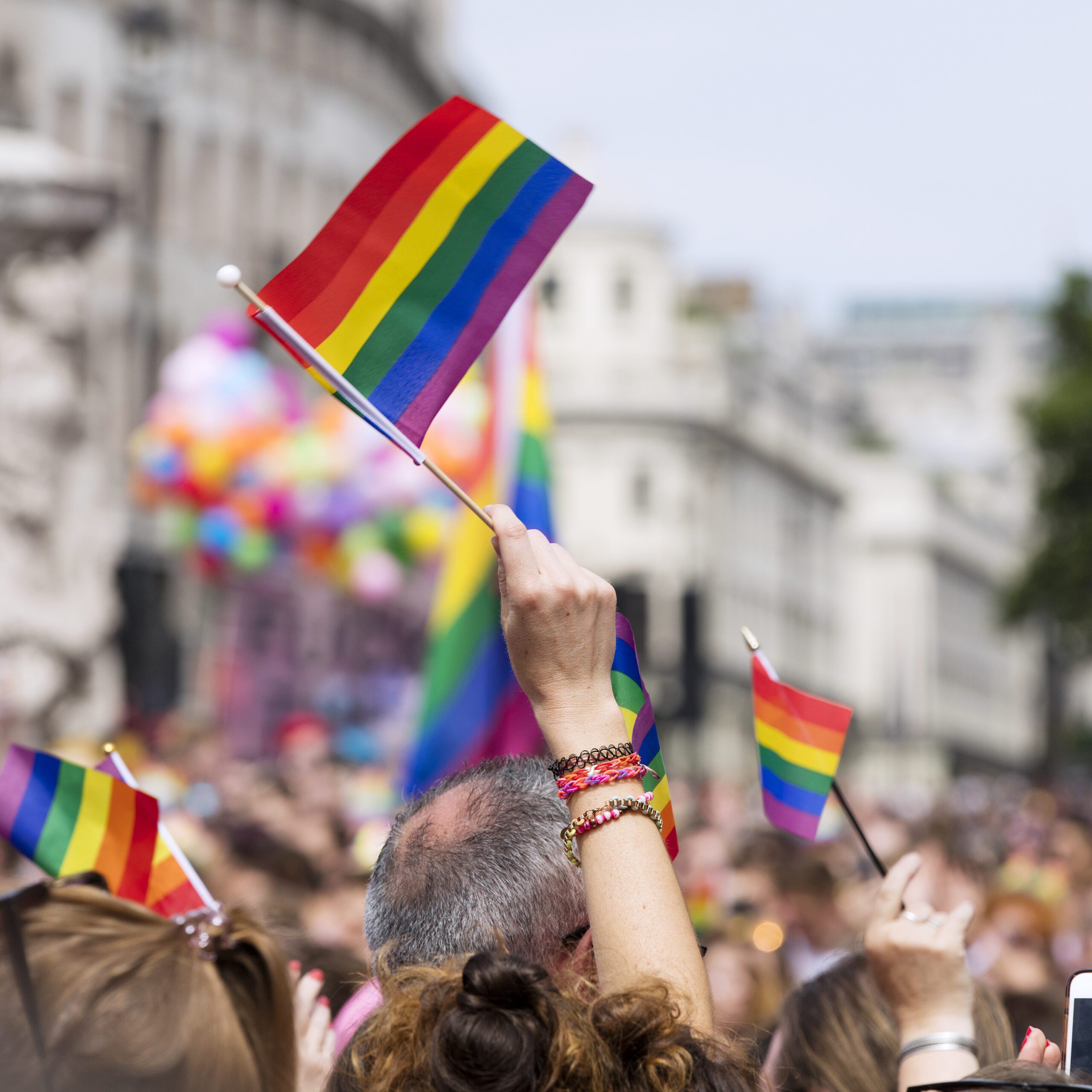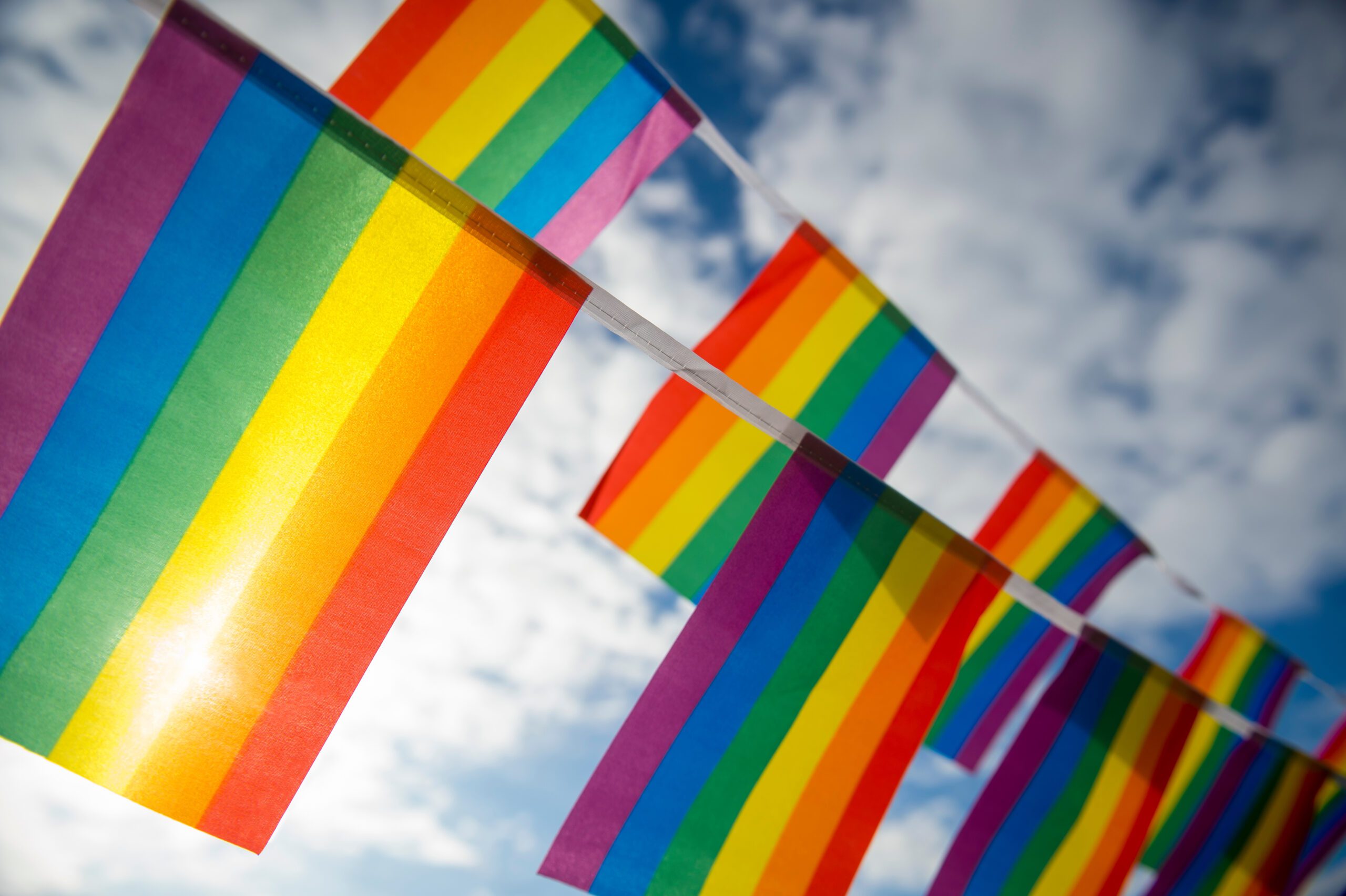Pride
At HFC, we believe in the power of a flag. More than just fabric and colours, a flag is a symbol of identity, unity, and community. For over 40 years, the LGBTQ+ community has flown their flags with pride, and we’re here to make sure that tradition continues with even more vibrancy and joy!
Whether you’re marching in a parade, decorating for a special event, or just want to add a touch of rainbow to your daily life, we’ve got you covered. From the classic rainbow flag, a symbol of diversity and inclusivity, to unique designs that represent the many identities of the LGBTQ+ community, our selection is as diverse as the community we serve.
Can’t find exactly what you’re looking for? No worries! Let us know, and we’ll create a custom flag that perfectly captures your vision.
A-Z of Pride
Agender
Agender is a term used to describe individuals who do not identify with traditional gender categories such as male or female. This identity encompasses a range of experiences: some agender people may see themselves as completely lacking gender, while others might identify as gender-neutral, feeling that they exist in a space that is neither male nor female.
Aromantic
Aromantic individuals are those who do not experience romantic attraction towards others. It’s important to note that this orientation varies greatly among individuals; some aromantic people may experience sexual attraction, while others might not. Additionally, aromantic individuals who do feel sexual or occasional romantic attraction often identify with other sexual orientations as well. This means they might use terms like gay, bi, lesbian, straight, or queer in combination with asexual to more accurately describe the direction or nature of their attraction
Bigender
Bigender is a term used to describe individuals who identify with two distinct gender identities. This identity can manifest in various ways: some bigender people might experience both gender identities simultaneously, while others may shift between them at different times. The specific gender identities of bigender individuals can span across the spectrum, encompassing binary genders like male and female, as well as nonbinary identities.
Cisgender
Cisgender refers to individuals whose gender identity aligns with the sex, male or female, that was assigned to them at birth, meaning they are not transgender. Pronounced as ‘sis-gender,’ this term exclusively describes a person’s gender identity without implying anything about their sexual or romantic attractions. It’s important to note that ‘cisgender’ is sometimes casually abbreviated as ‘cis.’
Demi (sexual and romantic)
Demisexual is an umbrella term used to describe individuals who experience sexual or romantic attraction only after forming a strong emotional bond with someone. This orientation is part of the broader spectrum of human sexuality and varies greatly among individuals. Demisexual people may also identify with other sexual orientations, using terms like gay, bi, lesbian, straight, or queer in conjunction with ‘demi’ to more accurately define the direction of their romantic or sexual attraction.
Gender Questioning
Questioning means that someone is still figuring out their gender identity, sexual orientation, or gender expression. Some people use questioning as an identity, if they still have not exactly figured out what their gender or sexual orientation is, or if they have no desire to figure it out and are happy with the label questioning.
Genderqueer
Genderqueer is a term used by people who do not identify exclusively as male or female. It’s an umbrella term for a diverse range of gender identities that fall outside the traditional binary. Also known as Non Binary
Hijra
A term used in South Asia to refer to a diverse group of people who are not considered to be strictly male or female: This includes transgender individuals, intersex people, and eunuchs. Hijras have a long and complex history in South Asia, and their communities have traditionally played specific roles in various cultural and social practices. However, they have also faced marginalization and discrimination. In recent years, there has been growing recognition of the rights of hijras, and some countries in South Asia have now legally recognized them as a third gender.
Lesbian
Refers to a woman who has a romantic and/or sexual orientation towards women. Some non-binary people may also identify with this term
Omnisexual
Omnisexuality is a sexual orientation where someone is attracted to people of all genders. This includes men, women, non-binary people, and anyone else on the gender spectrum.
Pocket Gender
Pocket Genders are gender identities that are used by one or a couple of people. These genders are often highly personal, or based on a highly specific concept.
Transgender
For some people, their inner sense of who they are (gender identity) doesn’t match the sex they were assigned at birth. These individuals are often called transgender, or trans for short. Under the umbrella of transgender, there are many experiences:
- Trans men and trans women: Their gender identity is the opposite of their assigned sex. Some may choose to medically transition to align their bodies with their internal sense of self.
- Non-binary or genderqueer: Their gender identity falls outside the traditional categories of “male” or “female”. This can include people who feel like a blend of both genders, experience their gender fluidity across time, or don’t identify with any gender at all.
- Other definitions: Some cultures recognize a third gender, and some define transgender people as belonging to this third category.
Two Spirit
The term “two-spirit” is used by some Indigenous North Americans to describe people who have both a masculine and a feminine spirit. It is an umbrella term that encompasses a wide range of gender identities and expressions, and is not simply synonymous with being gay, lesbian, bisexual, or transgender.
Ally
An ally is someone who actively supports and advocates for the LGBTQ community and its pursuit of equality in all spheres, both in public and in private settings. Allies can come from various backgrounds; they can be heterosexual and cisgender individuals, as well as members of the LGBTQ community itself. Being an ally involves understanding, empathy, and action towards promoting inclusivity, respect, and equal rights for LGBTQ individuals.
Asexual
Asexual, frequently abbreviated as ‘ace’, describes individuals who experience little to no sexual attraction towards others, or have a minimal interest in engaging in sexual activities. This orientation is diverse and exists on a spectrum, allowing for a range of experiences. People identifying as asexual might feel absolutely no sexual attraction, limited attraction under specific conditions, or a partial attraction that varies over time.
Bisexual
Bisexual is a term used to describe individuals who are attracted to more than one gender. It’s crucial to understand that this attraction is not necessarily based on sexual experiences. A person can identify as bisexual regardless of whether they have had specific sexual encounters or any at all. The essence of bisexuality is the capacity for emotional, romantic, or sexual attraction to people of more than one gender.
Gay
The term ‘gay’ refers to men who are romantically and/or sexually attracted to other men. Additionally, it is broadly used as a generic term for lesbian and gay sexuality. Importantly, some women prefer to identify as gay rather than lesbian. Furthermore, this term is not exclusive to binary gender identities; some non-binary individuals may also resonate with and identify as gay.
Gilbert Baker Flag
The Gilbert Baker flag, also known as the LGBTQ Pride flag, is a vibrant symbol composed of six horizontal stripes: red, orange, yellow, green, blue, and violet.
Baker designed the flag in 1978 as a symbol of diversity and hope for the LGBTQ community. Initially, it contained eight stripes, including hot pink and turquoise, but production difficulties led to the current six-stripe version becoming the widely recognized icon.
Gender Fluid
Genderfluid is a term used to describe people whose gender identity does not fit neatly into the categories of “male” or “female.” Instead, their gender identity can move or flow along a spectrum over time, or exist outside of the spectrum altogether
Greysexual
Greysexual, also known as grey-A, is an umbrella term that encompasses individuals who experience sexual attraction occasionally, rarely, or only under specific circumstances. This term highlights the variability in sexual attraction and acknowledges that it can be fluid and different for everyone. People who identify as greysexual might also use additional terms like gay, bi, lesbian, straight, or queer in conjunction with ‘grey’ to more precisely describe the nature and direction of their romantic or sexual attractions.
Intersex
Intersex refers to individuals born with sex characteristics that don’t fit the typical definitions of male or female. This can include variations in chromosomes, gonads, or genitals.
Some people with intersex traits have genitals that appear ambiguous, meaning they don’t clearly resemble typical male or female genitalia. Others may have internal reproductive organs that differ from what’s expected based on their external anatomy. In some cases, intersex traits may not be noticeable at birth and only become apparent during puberty or even later in life.
Lipstick Lesbian
The term “lipstick lesbian” is a slang term used to describe a lesbian who expresses traditionally feminine gender attributes. This can include, but is not limited to, wearing makeup, dresses, or skirts, and having other characteristics associated with femininity.
It’s important to note that this term can be complex and nuanced. While some lesbians embrace the term as a way to describe their identity, others find it limiting or even offensive.
Neutrois
Neutrois is a non-binary gender identity where someone experiences their gender as neutral, absent, or nullified. It’s like existing outside the traditional binary of male and female.
Pangender
Pangender is a gender identity defined as experiencing many or all genders. As an identity that is multigender—experiencing or having multiple genders—the number of genders experienced may be unknown or may fluctuate, and they may be experienced one at a time or simultaneously.
Pangender encompasses so many genders that is difficult or impossible to list all of them, and can be described as experiencing an immense number of genders
Polyamorous
The practice of, or desire for, intimate relationships with more than one partner, with the informed consent of all partners involved. It has been described as “consensual, ethical, and responsible non-monogamy”.
Trigender
Trigender is a gender identity that describes someone who experiences three genders simultaneously or fluidly. These three genders can be any combination of the traditional binary (male and female) and/or non-binary identities. Some people who identify as trigender might feel like they have all three genders within them all the time, while others might experience their genders as fluid, moving between the three over time.
Androgyny
Androgyny refers to the blending or a balance of traditionally masculine and feminine characteristics in an individual’s appearance, behaviour, or identity. It can manifest in various ways, such as in fashion, physical appearance, or mannerisms that do not conform strictly to conventional gender norms associated with being exclusively male or female. Androgyny is significant in the context of gender expression, as it challenges and expands the traditional understanding of gender roles and identity, emphasizing the fluidity and spectrum of gender.
Bear Pride
Bear Pride refers to a subculture within the LGBTQ+ community that celebrates a specific group often characterized by their larger, often hairier bodies and typically masculine traits. The term “bear” is commonly used in the gay community to describe a man who may be heavyset, muscular, or has a lot of body hair, and who often exhibits what are traditionally considered to be rugged masculine traits
Butch
Butch is a term commonly used within the lesbian, bisexual, and transgender (LBT) community to describe an individual who presents themselves in a way that is typically considered masculine. This expression can encompass various aspects of a person’s identity, including their style, behaviour, and overall demeanour.
Demigender
Demigender is a term used to describe individuals who partially identify with a certain gender. This partial identification means that a demigender person may feel a connection to a specific gender, but not wholly. For example, a demigender person might identify as partly female or partly male, or with another gender identity, while also experiencing a sense of gender neutrality or a lack of connection to traditional gender categories.
Feather Pride
Designed by artist Sean Campbell in 1999, the flag’s debut occurred in the 2000 edition of GLT magazine, a prominent LGBTQ+ publication.
Its fiery hues and soaring phoenix emblem represent the Drag community’s passionate spirit and resilience, particularly during the HIV/AIDS epidemic, when drag performances became crucial fundraising and activism platforms.
Embracing Drag Queens, Fancy Kings, and the broader community’s diverse spectrum, the flag celebrates self-expression and inclusivity within the LGBTQ+ landscape
Genderflux
Genderflux is a gender identity that falls under the non-binary umbrella. People who identify as genderflux experience a fluidity in their gender identity, meaning their internal sense of gender can shift over time. These shifts can happen frequently or infrequently, and can vary in intensity.
Heterosexual
The term ‘heterosexual’ is used to describe individuals who have a romantic and/or sexual orientation towards people of the opposite gender. This means a heterosexual man is attracted to women, and a heterosexual woman is attracted to men.
Labrys Lesbian Pride
In the 1970s, lesbian feminists found a powerful symbol in the ancient labrys, a double-headed axe. Reclaiming the image from its historical context, they imbued it with new meaning: strength, self-sufficiency, and defiance against oppression. The labrys became a banner for a community that had faced discrimination and hardship, a reminder of their resilience and enduring spirit.
Maverique
Maverique is a non-binary gender identity defined by an inner sense of self that exists apart from and isn’t influenced by the traditional binary of male and female. It’s not the absence of gender or neutrality but a distinct and unique gender experience.
Imagine gender as a vast landscape. Maverique wouldn’t be on the spectrum between the binary peaks of male and female, but rather off the map entirely, charting its own unique territory.
Non Binary
The term non-binary refers to people whose gender identity doesn’t fall exclusively into the traditional categories of “man” or “woman.” It’s an umbrella term that encompasses a spectrum of identities that exist outside the gender binary.
Pansexual
Describes a person who is attracted to — or has the potential to be attracted to — people of any gender or gender identity. This attraction can be emotional or physical.
Polysexual
Polysexuality is a sexual orientation where someone is attracted to people of multiple genders. This can include any combination of genders, such as men, women, non-binary people, transgender people, and more.
Twink Pride
Twinks are a subset of gay males that challenge traditional masculinity by adopting gendered and feminine characteristics. Physical appearance, preferences, display of traditionally gendered characteristics, and personal connection may all be used to describe twinks.
A twink is often shown as a skinny guy with no facial hair and often no body hair, who may or may not dress in non-traditionally masculine ways.





